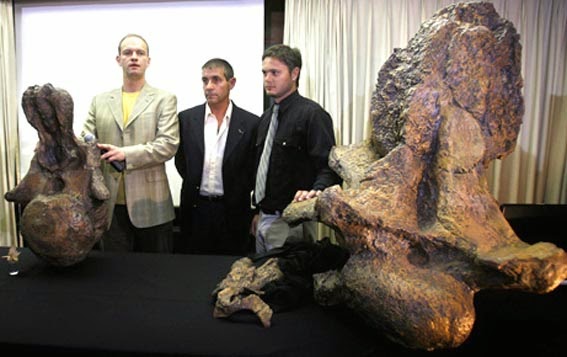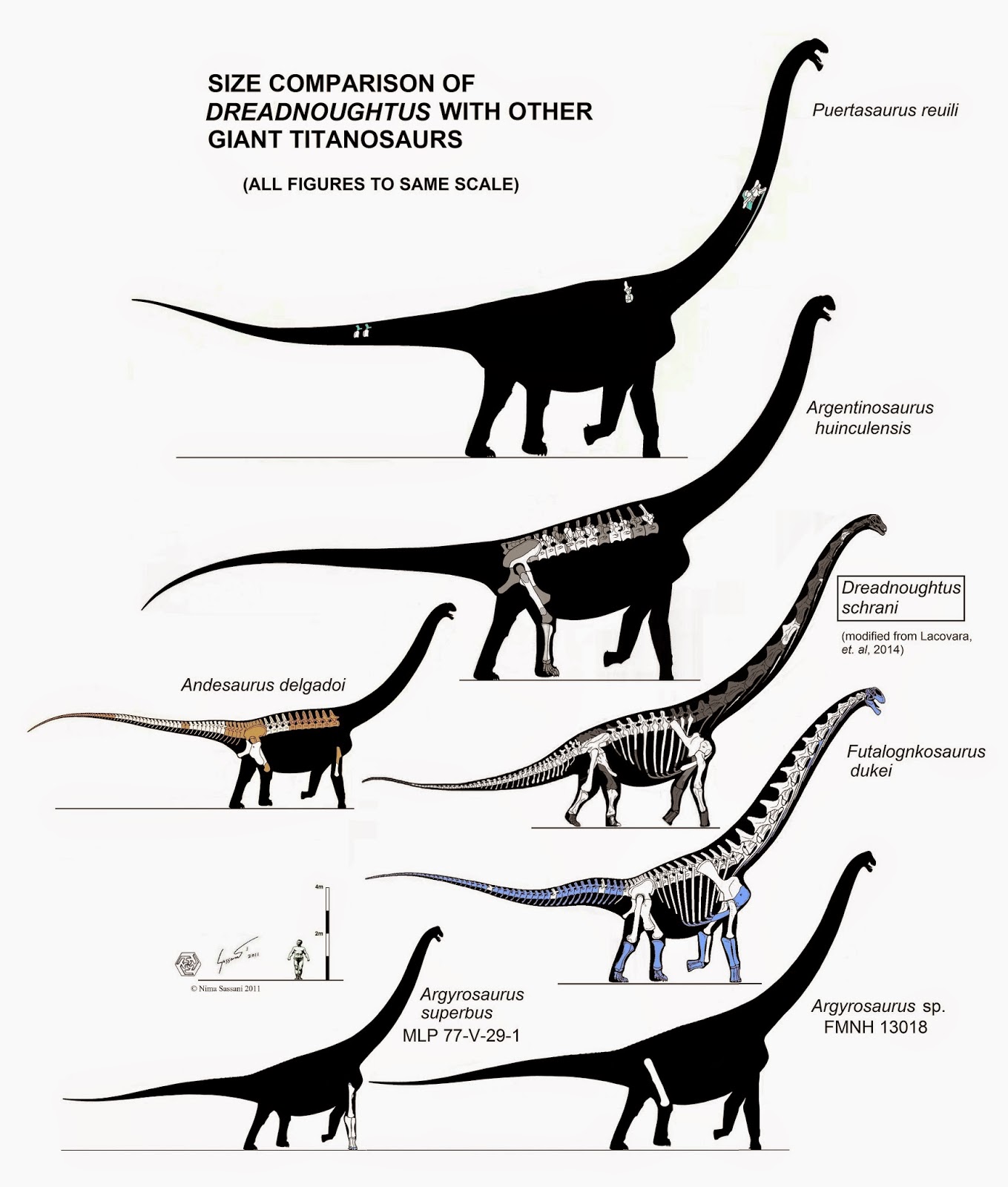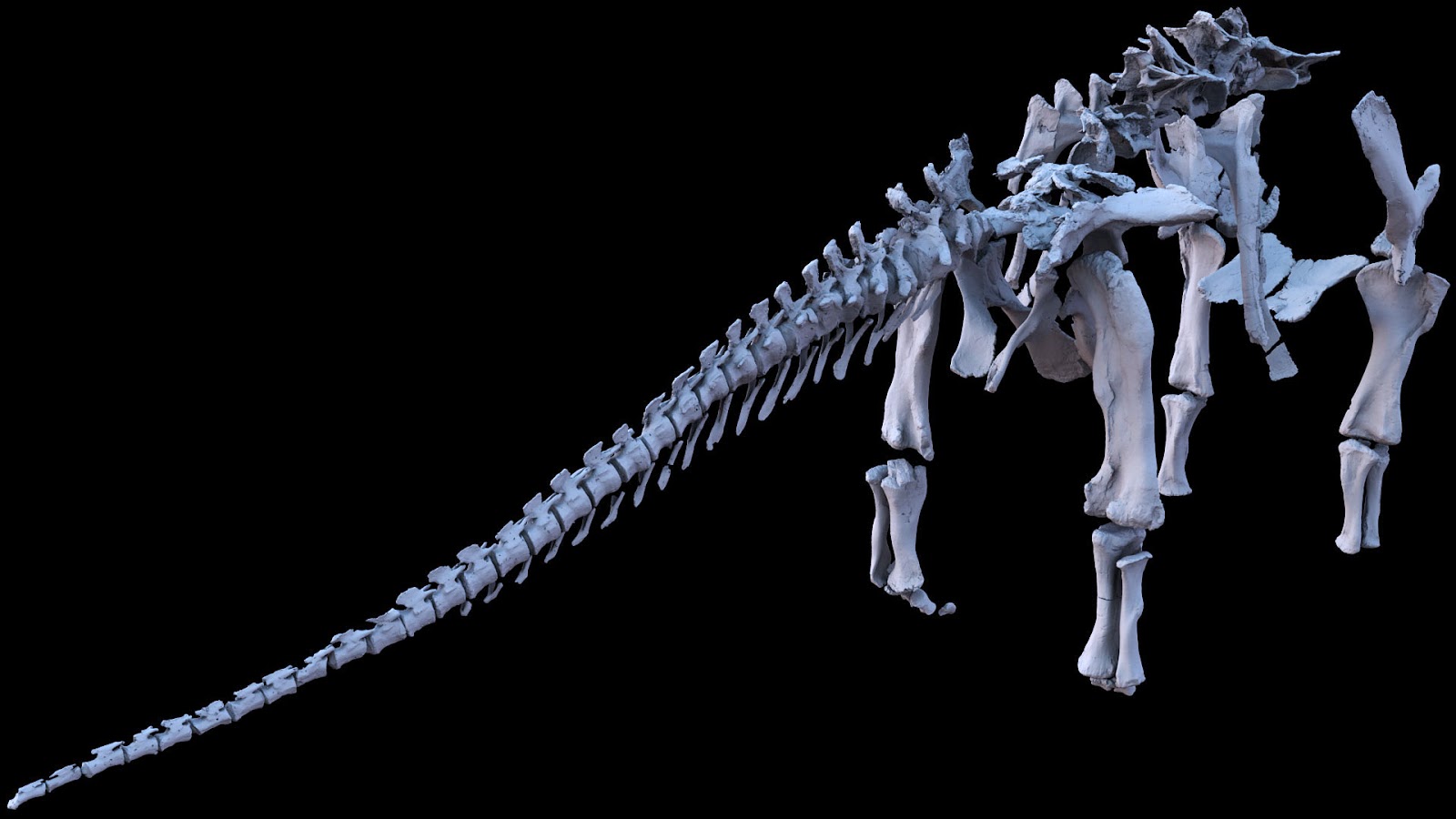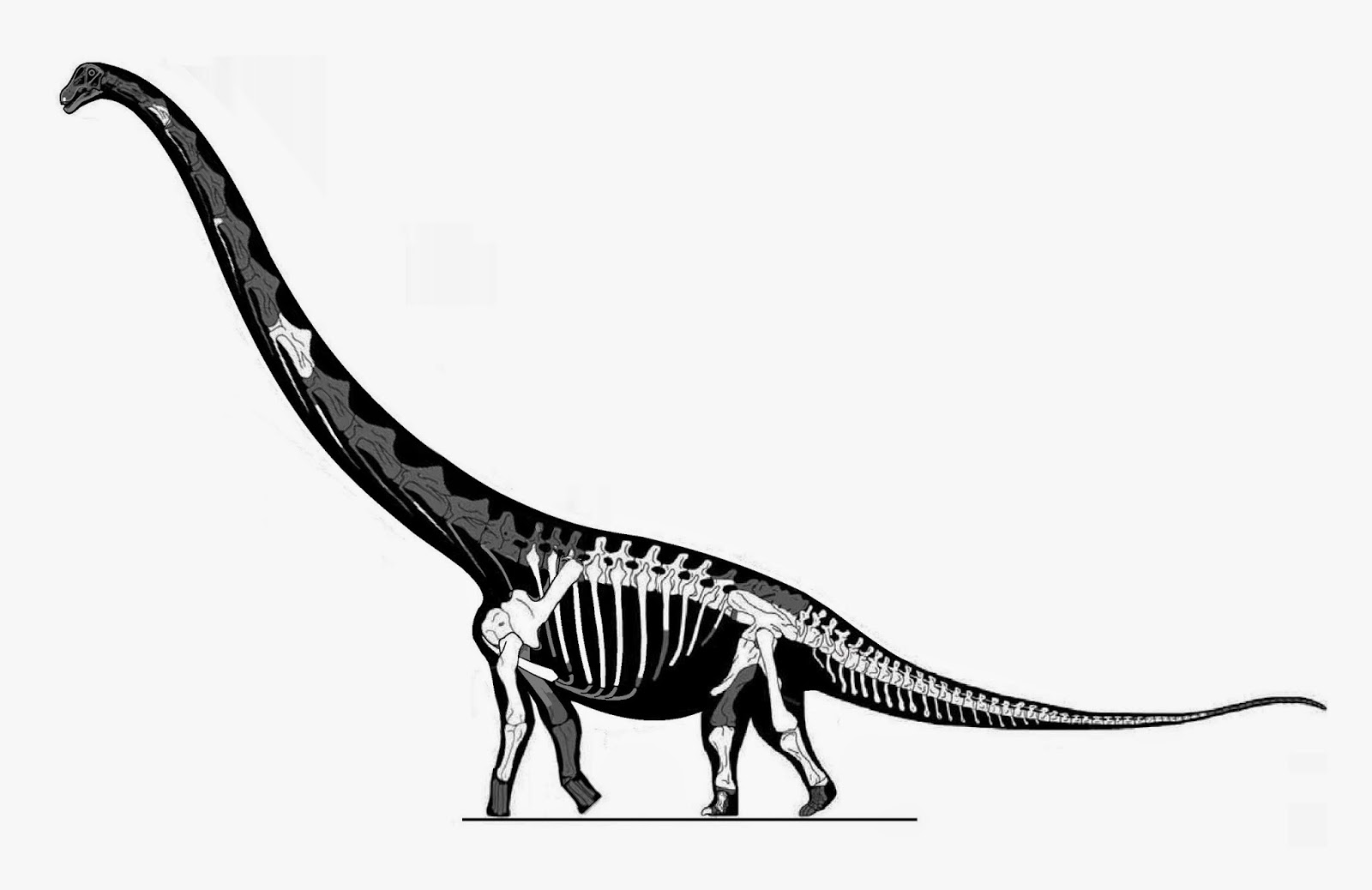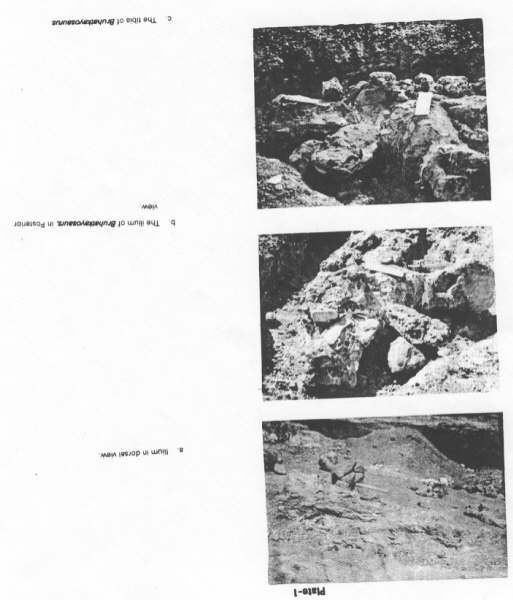The previous post on Bruhathkayosaurus has given me some thoughts on an interesting possibility: what if this animal were indeed real?
It's no secret that I'm seriously skeptical of the remains that Yadagiri and Ayyasami found in 1989 and labeled as "Bruhathkayosaurus". First they identified it as a very large predator, then later on others suggested it must be a plant-eating sauropod, and probably a titanosaur at that. Most of these theories are pure conjecture. But from the size of the remains it really only makes sense that if this animal were real, it would have to be a sauropod.
But how should we interpret these remains, which are now the lost victims of a monsoon flood? The discoverers are notorious for describing stuff that isn't what seemed at first. Dravidosaurus, the supposed Late Cretaceous "lazarus" stegosaur, really turned out to be a very badly eroded and fragmentary plesiosaur. The alleged stegosaur back plates were really the sternals of a marine reptile, so weathered as to be barely identifiable at all.
Is Bruhathkayosaurus similarly misidentified? Might it be a chimera of unrelated animals, or, as was the case with Dravidosaurus, not a dinosaur at all? Some have suggested it might even be petrified wood. And sole testimony of its authenticity rests with Dr. Sankar Chatterjee, who himself has incorrectly described (and some might even say largely invented) a number of extinct creatures known from very poor and dubious material (notably Protoavis).
But what if? What if Bruhathkayosaurus really was authentic and a titanosaur at that? What might it look like?
The photos reveal little, and need some guesswork to interpret. Here's Steve O'Connor's take:
The red-tinted areas are the bones. The top of the hip socket it easily visible (if a bit oddly triangular) in the second photo. The front end of the ilium is broken off, but would be to the left of the second photo (regardless of what the confusing and likely incorrect captions seem to say - there should not be hip socket processes sticking out of the top or rear of an ilium!).
Here is the material without tinting, and with my own interpretation of the outlines and corrected captions under the original ones:
And finally with tinting of different areas:
There seems to be some sacrum material in the photos that wasn't initially identified. Sacral ribs at least. The green area is an unusual bit of bone or some other substance which is not part of the hip structure. The ilium, unusually, has a very long posterior shelf. It's elongated almost into a cylinder. There are few sauropods that have hips like this, and the one that immediately comes to mind is an undoubtedly bizarre one - Opisthocoelicaudia.
The ilium shelf in Opisthocoelicaudia is strangely similar to that of a tyrannosaur in general shape - long, low, and with a substantial rear process not seen in many titanosaurian sauropods. This may have something to do with Yadagiri and Ayyasami's initial identification of the material as a giant theropod.
T. rex skeletal (based on AMNH specimen) by Greg Paul. Posted for informational purposes only.
Indeed there IS a bizarre parallel between the rear shelf process in that T .rex ilium and the one for Bruhathkayosaurus. But I doubt "big Bru" was anything other than a plant-eating sauropod. the anterior process of the ilium's hip socket is elongated similarly to Alamosaurus, and most titanosaurs and brachiosaurs, rather than resembling the short anterior socket process in theropods. The ilium was described as 1200mm long, larger than that of Giraffatitan, which makes anything other than a sauropod identity next to impossible.
However, it's not certain if this length of 1200mm refers to the portion of the ilium which was recovered, or to the likely size of the whole thing. In any case, though large, such a length for the ilium makes it very unlikely that Bruhathkayosaurus was anything close to the biggest dinosaur. Indeed, the hips of "Brachiosaurus" nougaredi were 1300mm long not including the missing first sacral vertebra, and would have been at least 1500mm long when complete. So from one point of view Bruhathkayosaurus may not have all that big. For comparison, the ilia of the holotype of Argentinosaurus, when complete, would have been around 1800mm (though the sacral centra would have been shorter at around 1300mm width of the Argentinosaurus hips could have been as much as 3000mm or 10 feet). However, even given those numbers, it's likely that Bruhathkayosaurus, if it existed, was still a very large animal of Argyrosaurus or Paralititan class.
The "tibia" was estimated at 2000mm, which is unusually large to go with tie ilium. If it's a real bone (and not, as I suspect, petrified wood), then it may belong to a different dinosaur, something far larger. Even the tibia of Argentinosaurus doesn't come close to 2m, so the figure could be grossly overinflated or not valid at all. But whatever it is, the "tibia" is not likely to belong to the same animal as the ilium. There is other material supposedly found at the site: a caudal centrum 750mm wide - downright huge even by the standards of Argentinosaurus and Puertasaurus vertebrae - and a partial femur with a condylar width of 750 mm and a shaft width of 450 mm. According to Zach Armstrong,
67 tonnes (which I assume is based on admittedly error-prone limb bone allometry equations) is not too far from my 70-ton estimate for adult Argyrosaurus, which overall would have been about 15-20 feet longer than Giraffatitan HMN SII and about twice as massive due to its far more robust proportions.
So basically what we appear to have is an ilium and partial femur that belonged to an Argyrosaurus-sized animal with Opisthocoelicaudia-type body design, along with a caudal vertebra and a "tibia" from a much larger creature, both of which are currently labeled Bruhathkayosaurus, and no longer exist even as fossils. If, that is, they can be trusted to be real. I have never seen a picture of the caudal vertebra OR the femur, though the dimensions of the femur are at least a bit more believable. The two different-sized sauropods (assuming the larger one is valid at all) could just as well be two unrelated animals as different-aged individuals of the same species.
The ilium and femur are definitely not from the biggest dinosaur yet known. But the tibia and caudal centrum could be, if both were legit remains. Problem is, we may never know, as it's all been washed away and destroyed. Dr. Ayyasami reportedly told Armstrong: "Only thing is that I did not visit the site again to check for further bone collection. I may do so next year as I plan for a visit to the Cretaceous of Ariyalur." We all anticipate the results, though given how these things usually go and stretch out over many years just to prepare for in places like India, Dr. Ayyasami's expedition may not materialize anytime soon. If and when it does, I highly suggest that this time he take a digital camera with spare batteries, and invite a real artist along to sketch the bones for good measure. So that we may have better drawings to go on than this embarrassing scrawl:
It's no secret that I'm seriously skeptical of the remains that Yadagiri and Ayyasami found in 1989 and labeled as "Bruhathkayosaurus". First they identified it as a very large predator, then later on others suggested it must be a plant-eating sauropod, and probably a titanosaur at that. Most of these theories are pure conjecture. But from the size of the remains it really only makes sense that if this animal were real, it would have to be a sauropod.
But how should we interpret these remains, which are now the lost victims of a monsoon flood? The discoverers are notorious for describing stuff that isn't what seemed at first. Dravidosaurus, the supposed Late Cretaceous "lazarus" stegosaur, really turned out to be a very badly eroded and fragmentary plesiosaur. The alleged stegosaur back plates were really the sternals of a marine reptile, so weathered as to be barely identifiable at all.
Is Bruhathkayosaurus similarly misidentified? Might it be a chimera of unrelated animals, or, as was the case with Dravidosaurus, not a dinosaur at all? Some have suggested it might even be petrified wood. And sole testimony of its authenticity rests with Dr. Sankar Chatterjee, who himself has incorrectly described (and some might even say largely invented) a number of extinct creatures known from very poor and dubious material (notably Protoavis).
But what if? What if Bruhathkayosaurus really was authentic and a titanosaur at that? What might it look like?
The photos reveal little, and need some guesswork to interpret. Here's Steve O'Connor's take:
The red-tinted areas are the bones. The top of the hip socket it easily visible (if a bit oddly triangular) in the second photo. The front end of the ilium is broken off, but would be to the left of the second photo (regardless of what the confusing and likely incorrect captions seem to say - there should not be hip socket processes sticking out of the top or rear of an ilium!).
Here is the material without tinting, and with my own interpretation of the outlines and corrected captions under the original ones:
And finally with tinting of different areas:
There seems to be some sacrum material in the photos that wasn't initially identified. Sacral ribs at least. The green area is an unusual bit of bone or some other substance which is not part of the hip structure. The ilium, unusually, has a very long posterior shelf. It's elongated almost into a cylinder. There are few sauropods that have hips like this, and the one that immediately comes to mind is an undoubtedly bizarre one - Opisthocoelicaudia.
Opisthocoelicaudia skarzynskii - skeletal by Jaime Headden
The ilium shelf in Opisthocoelicaudia is strangely similar to that of a tyrannosaur in general shape - long, low, and with a substantial rear process not seen in many titanosaurian sauropods. This may have something to do with Yadagiri and Ayyasami's initial identification of the material as a giant theropod.
T. rex skeletal (based on AMNH specimen) by Greg Paul. Posted for informational purposes only.
Indeed there IS a bizarre parallel between the rear shelf process in that T .rex ilium and the one for Bruhathkayosaurus. But I doubt "big Bru" was anything other than a plant-eating sauropod. the anterior process of the ilium's hip socket is elongated similarly to Alamosaurus, and most titanosaurs and brachiosaurs, rather than resembling the short anterior socket process in theropods. The ilium was described as 1200mm long, larger than that of Giraffatitan, which makes anything other than a sauropod identity next to impossible.
However, it's not certain if this length of 1200mm refers to the portion of the ilium which was recovered, or to the likely size of the whole thing. In any case, though large, such a length for the ilium makes it very unlikely that Bruhathkayosaurus was anything close to the biggest dinosaur. Indeed, the hips of "Brachiosaurus" nougaredi were 1300mm long not including the missing first sacral vertebra, and would have been at least 1500mm long when complete. So from one point of view Bruhathkayosaurus may not have all that big. For comparison, the ilia of the holotype of Argentinosaurus, when complete, would have been around 1800mm (though the sacral centra would have been shorter at around 1300mm width of the Argentinosaurus hips could have been as much as 3000mm or 10 feet). However, even given those numbers, it's likely that Bruhathkayosaurus, if it existed, was still a very large animal of Argyrosaurus or Paralititan class.
The "tibia" was estimated at 2000mm, which is unusually large to go with tie ilium. If it's a real bone (and not, as I suspect, petrified wood), then it may belong to a different dinosaur, something far larger. Even the tibia of Argentinosaurus doesn't come close to 2m, so the figure could be grossly overinflated or not valid at all. But whatever it is, the "tibia" is not likely to belong to the same animal as the ilium. There is other material supposedly found at the site: a caudal centrum 750mm wide - downright huge even by the standards of Argentinosaurus and Puertasaurus vertebrae - and a partial femur with a condylar width of 750 mm and a shaft width of 450 mm. According to Zach Armstrong,
"The femoral condyle width was 750 mm, compared to in Giraffatitan, where it is about 580 mm (going off of drawings by Janensch in Taylor (2009)). This means the Bruhathkayosaurus femur was about 1.28 times as long, assuming if we scale roughly off of that, then Bruhathkayosaurus was about 2.1 times has heavy, or roughly 67 tonnes. Again, far from being the largest dinosaur, and also shows why going off of appendicular proportions can be quite misleading."
67 tonnes (which I assume is based on admittedly error-prone limb bone allometry equations) is not too far from my 70-ton estimate for adult Argyrosaurus, which overall would have been about 15-20 feet longer than Giraffatitan HMN SII and about twice as massive due to its far more robust proportions.
So basically what we appear to have is an ilium and partial femur that belonged to an Argyrosaurus-sized animal with Opisthocoelicaudia-type body design, along with a caudal vertebra and a "tibia" from a much larger creature, both of which are currently labeled Bruhathkayosaurus, and no longer exist even as fossils. If, that is, they can be trusted to be real. I have never seen a picture of the caudal vertebra OR the femur, though the dimensions of the femur are at least a bit more believable. The two different-sized sauropods (assuming the larger one is valid at all) could just as well be two unrelated animals as different-aged individuals of the same species.
The ilium and femur are definitely not from the biggest dinosaur yet known. But the tibia and caudal centrum could be, if both were legit remains. Problem is, we may never know, as it's all been washed away and destroyed. Dr. Ayyasami reportedly told Armstrong: "Only thing is that I did not visit the site again to check for further bone collection. I may do so next year as I plan for a visit to the Cretaceous of Ariyalur." We all anticipate the results, though given how these things usually go and stretch out over many years just to prepare for in places like India, Dr. Ayyasami's expedition may not materialize anytime soon. If and when it does, I highly suggest that this time he take a digital camera with spare batteries, and invite a real artist along to sketch the bones for good measure. So that we may have better drawings to go on than this embarrassing scrawl:





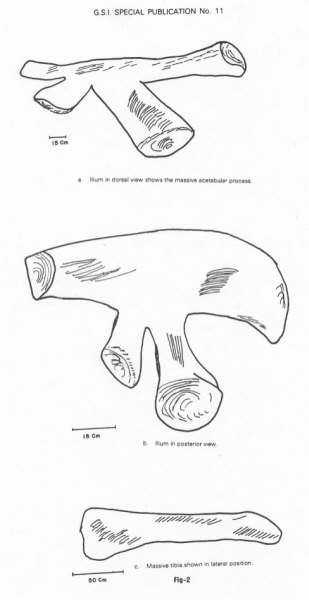








































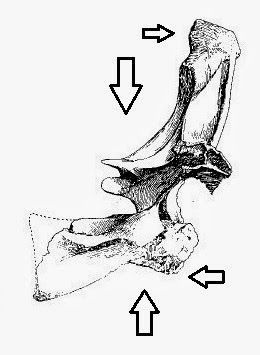











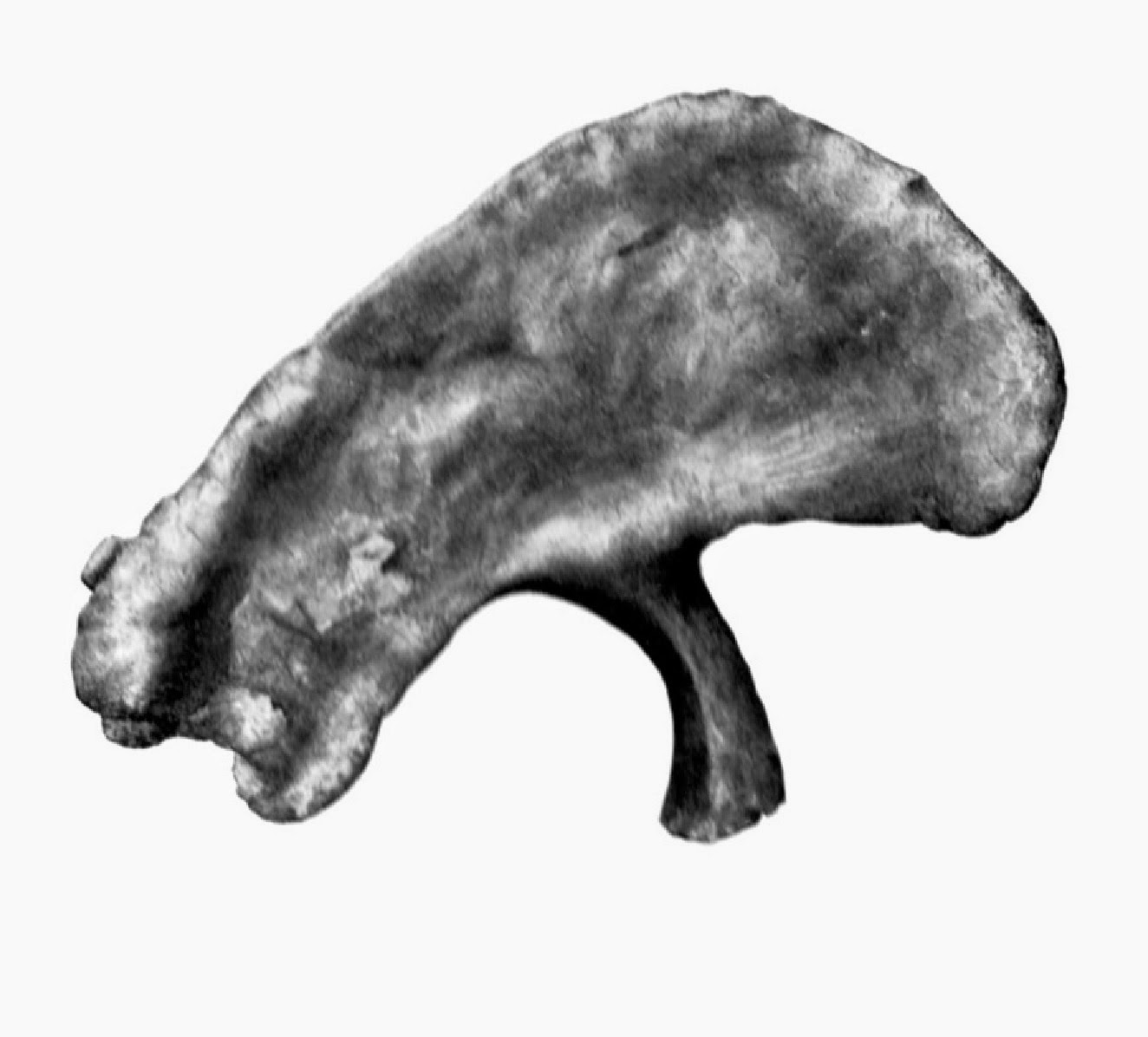
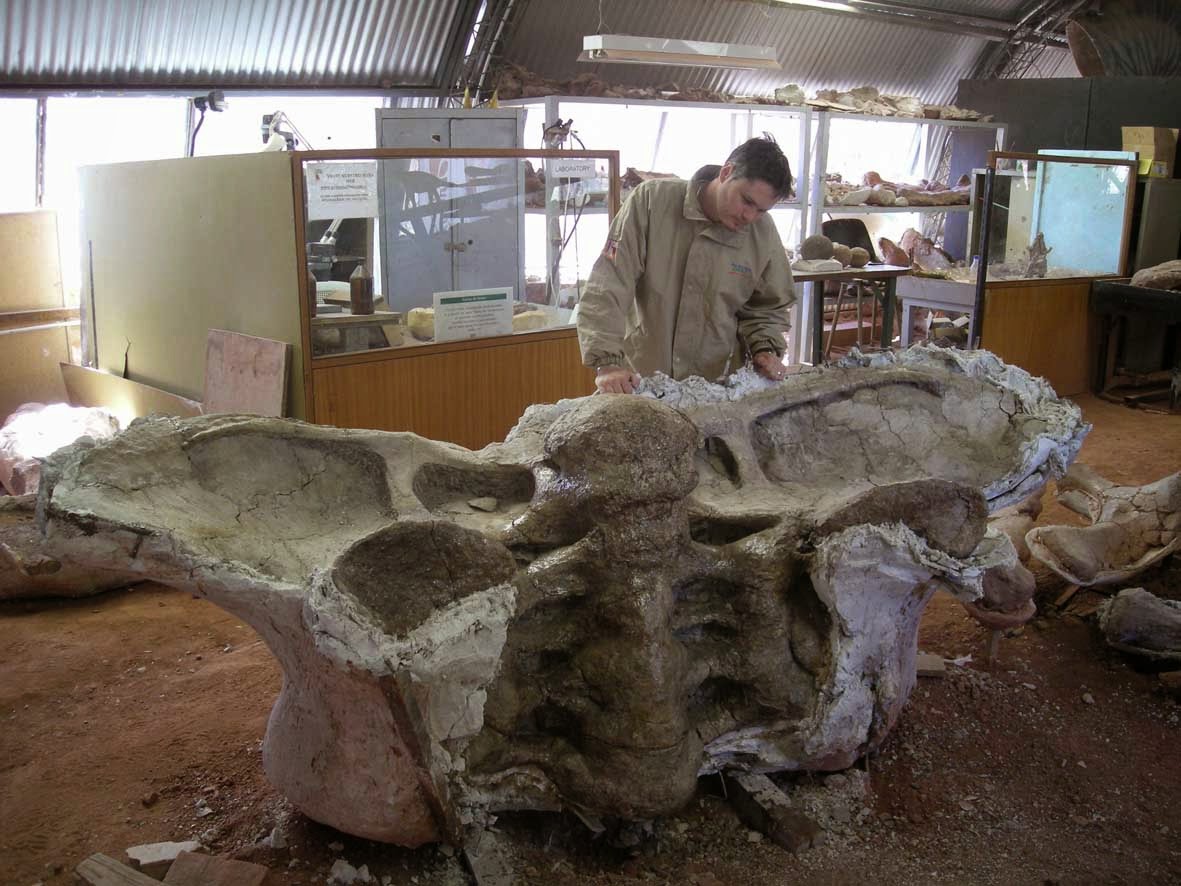





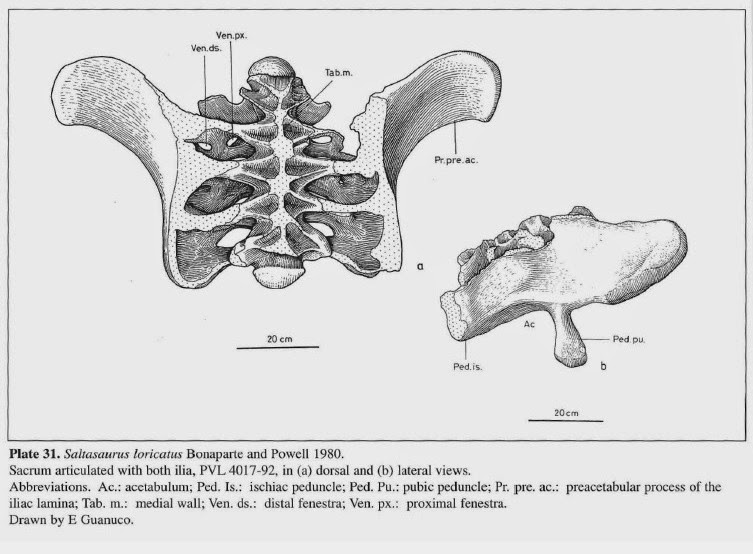




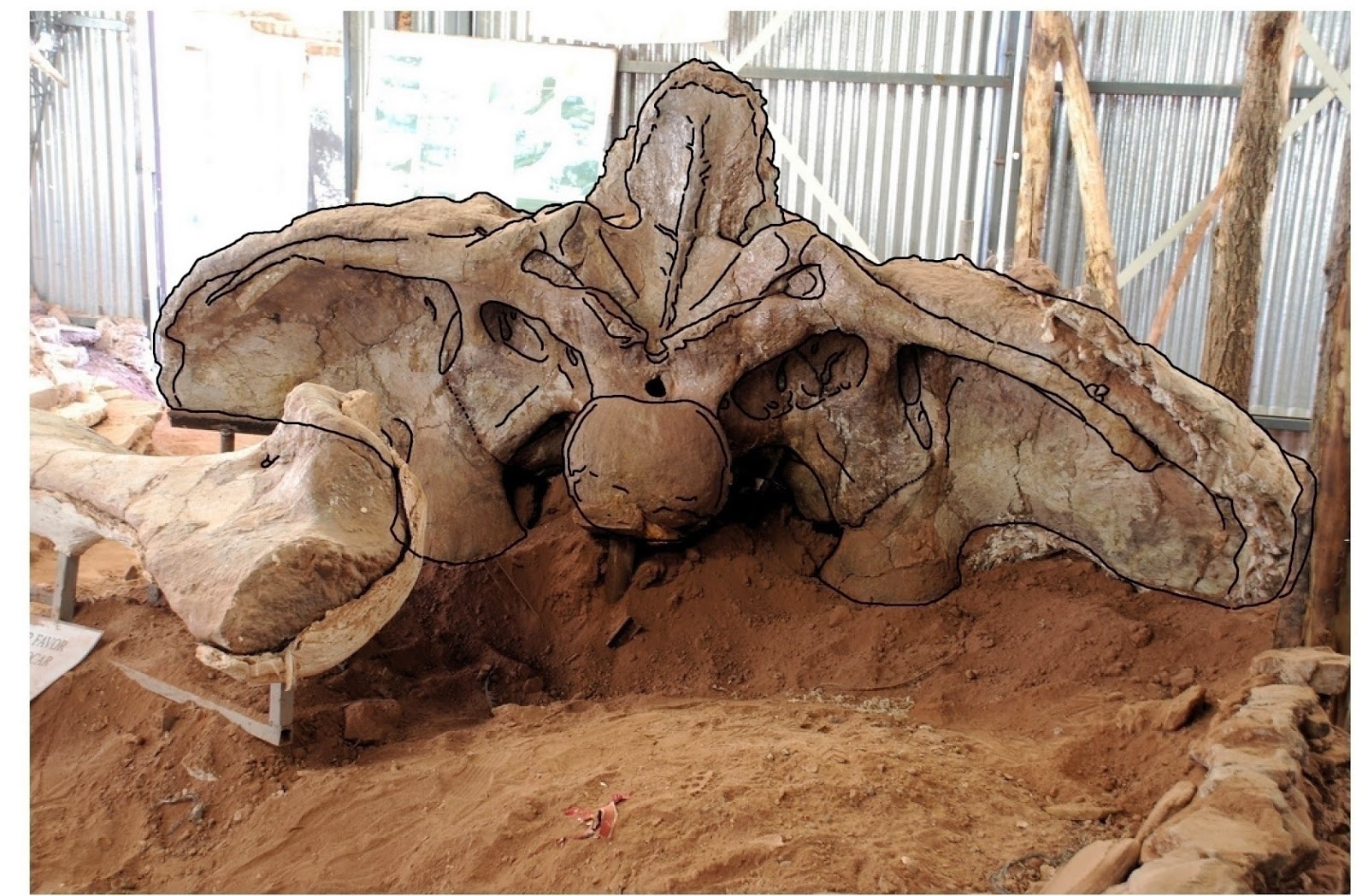


















.jpg)


.jpg)




